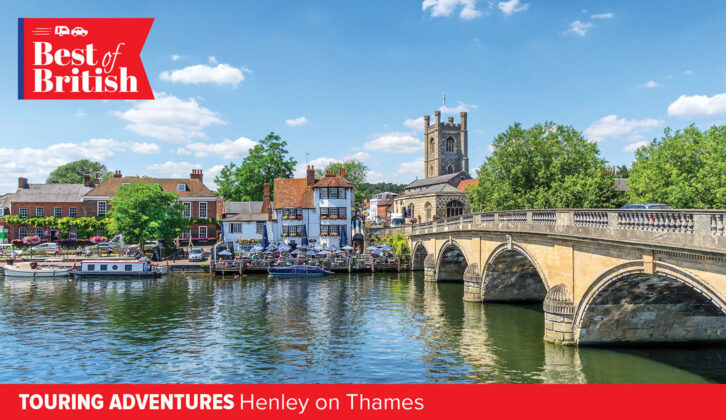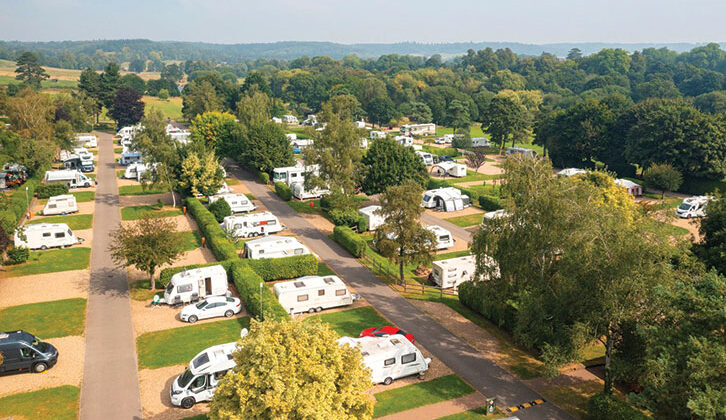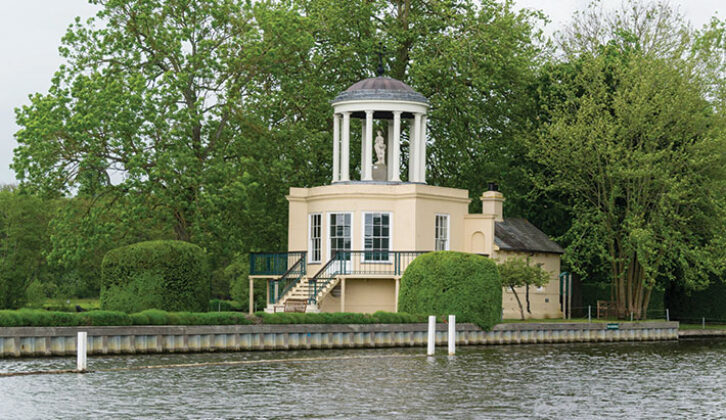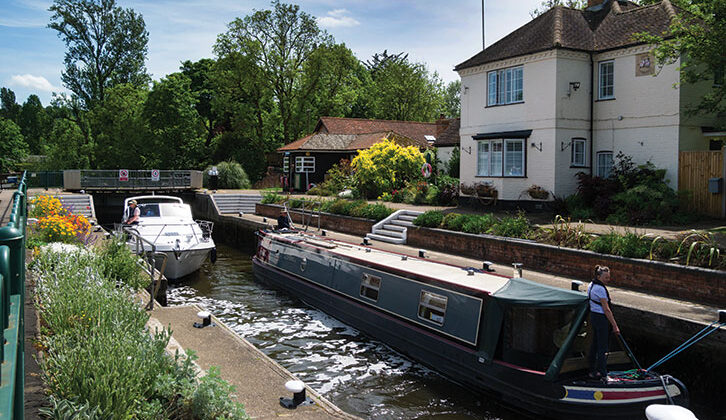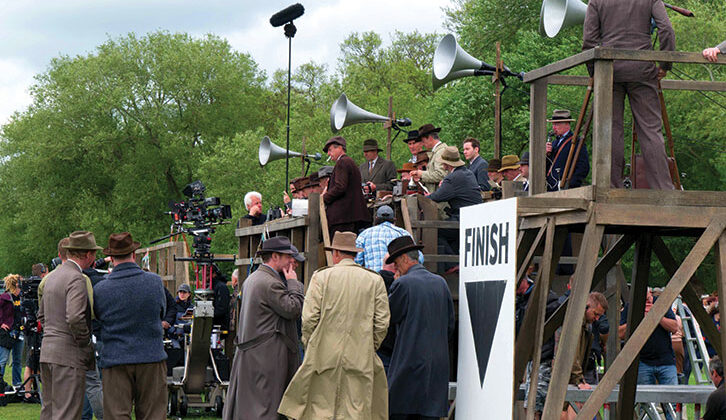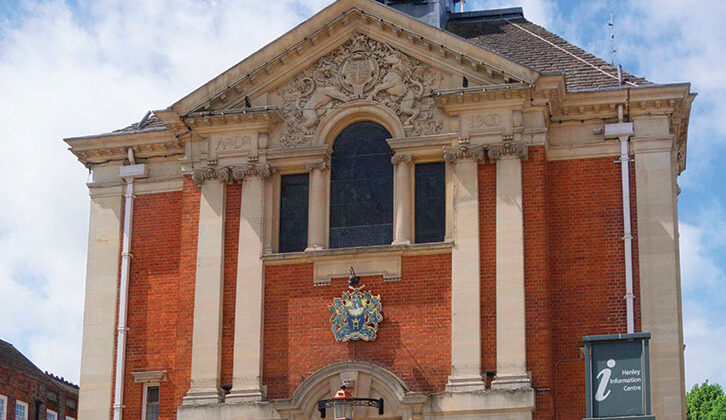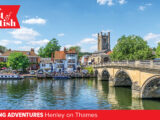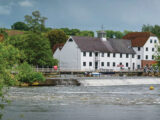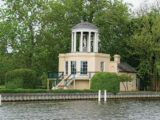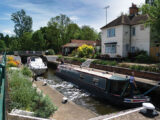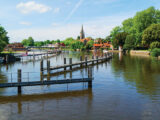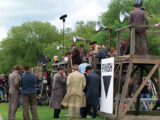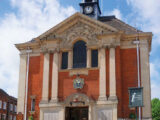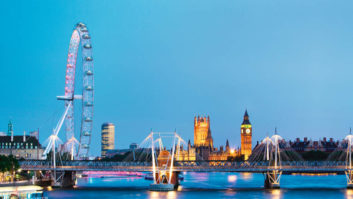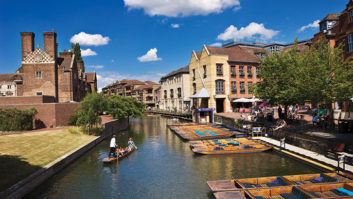We’d heard great reports about Swiss Farm Touring & Camping, within easy walking distance of Henley-on-Thames.
It’s a site that has regularly appeared in the Top 100 Sites, Practical Caravan’s best caravan park guide, so we thought it would be the ideal base for our four-night tour.
Henley has an excellent train link to the village of Taplow and there are bus stops at the entrance to the site, one service going towards Reading and the other in the opposite direction to Marlow, which fitted our travel requirements perfectly.
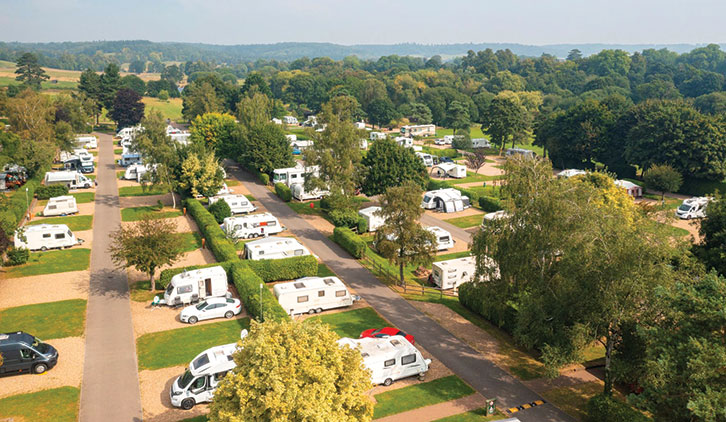
Celebrities and regattas
Following a restful first night at this peaceful site, we decided to explore the historic town of Henley-on-Thames, with its many independent shops and great choice of cafés and restaurants.
After a little retail therapy, we took to the Thames Path National Trail, which has views of the Grade I listed, five-arched Henley Bridge, built in 1786. The riverside was packed with moored leisure craft, with many other boats cruising along the river.
After a pleasant lunch at The Chocolate Café, we walked along the Thames Path to Hambleden Mill, a historic watermill at Mill End on the Buckinghamshire side of the Thames. All the time, we had wonderful views of red kites swooping overhead.

Unbeknown to us, at the Upper Thames Rowing Club, not far from the start of our walk, they were filming The Boys in the Boat, directed by George Clooney, a film about the 1936 US Olympic gold medal winning rowing team.
We managed to walk through the film set (sadly without seeing George) and soon came across Temple Island. Set amid delightful watermeadows and surrounded by wooded hills on one of the most picturesque stretches of the Thames, this is the starting point for the famous Henley Regatta course.
On the island, you’ll find Fawley Temple, an elegant folly built in 1771 by architect James Wyatt for the Freeman family, as a fishing lodge for nearby Fawley Court. These days, the island is available for private hire and is an understandably popular wedding venue.
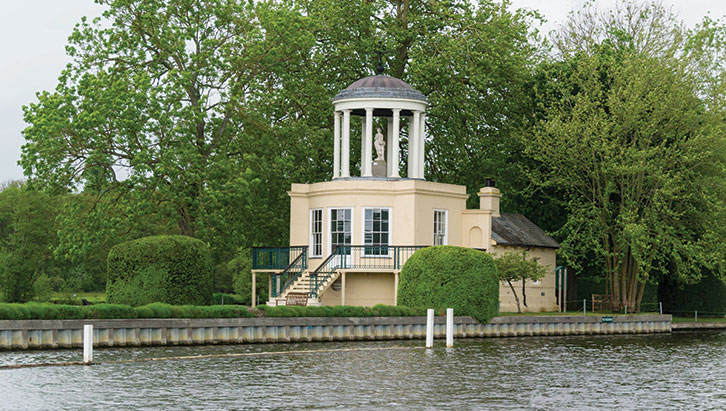
Lock and watermill
Following the Thames Path, we eventually reached Hambleden Lock, a pound lock built in 1773. Caleb Gould, the lock-keeper from 1777, died aged 91 and is buried in the nearby Remenham churchyard. He was also a baker, who sold his bread to the Thames bargees – the remains of his ovens were not discovered until 1975.
We watched river cruisers pass through the lock, as well as a double canoe paddled by a group of young people. Passing the lock, we had a good view of Hambleden Mill, on the opposite bank in Buckinghamshire.
Hambleden Mill was built in the 18th century and Grade II listed in 1955, and has now been converted into flats. Alongside the mill is Hambleden Marina, which occupies two islands. Further along the riverfront are the remains of a Roman villa.
We continued along the Berkshire bank of the Thames Path, which joins the Berkshire Loop of the Wokingham Way. As time was getting on, we retraced our steps and again made our way through the film set, before reaching Henley-on-Thames and a welcome cup of tea in The Chocolate Café.
Island life
Next day, we headed into Henley-on-Thames to catch the train to Maidenhead. We had to change trains at Taplow, but there was little delay. Once there, we were soon back on the Thames Path, heading for Boulter’s Lock.
The lock was very busy, with river cruisers and narrowboats travelling up and down the Thames. The current lock was built in 1912, replacing the 1772 construction built by the Thames Navigation Commission.
A short distance upriver is a weir, which has been modified to allow kayakers through without disrupting other river users, and one of the most popular white-water kayaking areas on the Thames.
The Boathouse restaurant, reached by a road bridge to Boulter’s Lock Island, is a very popular place for fine dining. Further on, a footbridge over the old millstream accesses Ray Mill Island.
The island is named after the Ray family, who once operated a flour mill here. This was constructed in 1726, on the site of an even older mill, and continued to produce flour until the 1920s.
The island is now a charming park, administered by the Borough of Windsor and Maidenhead and hosting a number of interesting statues, such as ‘Vintage Boys’ by Lydia Karpinska, ‘The Companions’ and ‘Maiden with Swans’ by Eunice Goodman, and the Berkshire Sands Memorial Tree.
It also has an aviary and a guinea pig enclosure, wooden animals dotted around the park, picnic tables and a café.
The adventure playground is popular with children, and all in all, this is a quiet spot to relax and well worth a visit.
Having walked around the park, we went back to the train station for the return trip to the campsite.
While we were waiting for our train, we were lucky enough to see one of the new Elizabeth Line trains drawing into the station on its way from Reading across London – an impressive sight (take a look at our best caravan park in London if you’re thinking of heading to the capital soon).
Magical Marlow
On the final full day of our trip, we decided to catch the bus to Marlow, a lovely town in Buckinghamshire in a picturesque location on the Thames, near the Chiltern Hills.
This vibrant Georgian market town has historic streets with independent shops, restaurants, cafés and bistros. We walked down the High Street, stopping at Fego Café for our morning coffee. Later, we reached the town’s famous landmark, Marlow Suspension Bridge, spanning the Thames between Buckinghamshire and Berkshire.
The bridge, which was opened in 1832, was designed by civil engineer William Tierney Clark. On the Berkshire side is the four-star Macdonald Compleat Angler Hotel, named after Izaak Walton’s renowned book.
Many famous people have lived in Marlow, including the great poets TS Eliot and Percy Bysshe Shelley, and authors such as Jerome K Jerome and Mary Shelley – who completed her iconic gothic novel, Frankenstein, while she was a resident there.
Marlow Rowing Club produced Olympic gold medallist Sir Steve Redgrave, whose statue stands in Higginson Park.
A campaign to paint the High Street postbox gold in celebration of his success sadly failed, but it was eventually painted to mark the achievements of Paralympian Naomi Riches, another gold medal winner who trained with Marlow Rowing Club.
During our walk, we stayed on the Marlow side of the river, heading towards Marlow Lock on the Thames Path, affording a lovely view to the Suspension Bridge, before we stopped to watch the river traffic making its way through the lock.
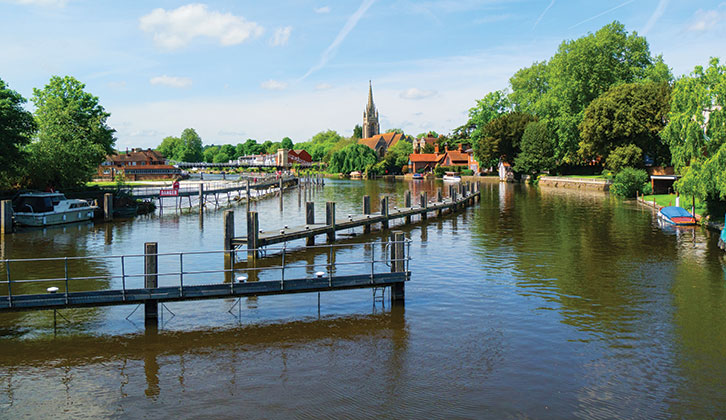
It was so peaceful sitting there in the sunshine, watching the leisure craft moving serenely along the Thames.
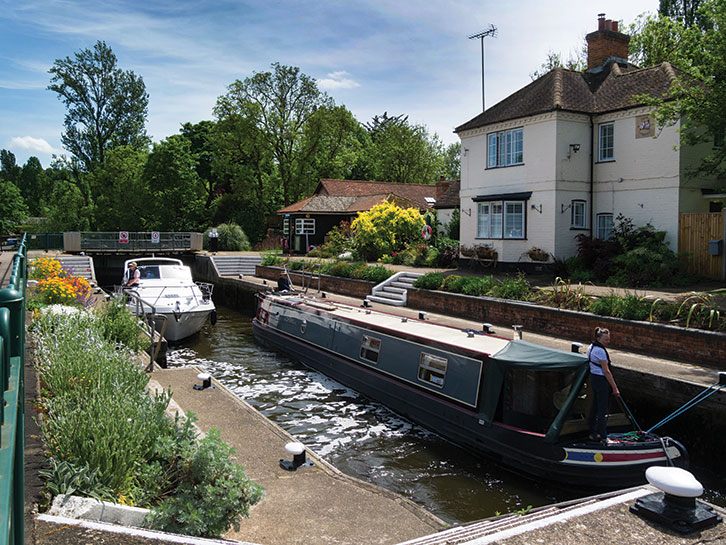
When it was time for lunch, we walked the short distance to The Two Brewers, a historic pub in St Peter’s Street, where we enjoyed a delicious snack in the sunny beer garden, before heading back to the campsite to prepare for our departure.
When to go to Henley-on-Thames
Henley-on-Thames is a very popular tourist destination all year round, with plenty to see and do, although the busiest time is of course late June to early July, when the famous regatta takes place.
Food and drink
Where we stayed in Henley-on-Thames
Marlow Road, Henley-on-Thames RG9 2HY, 01491 573 419
Find out more
- River Thames
- Thames Path National Trail
- Henley-on-Thames to Hambleden Mill trail
- Henley Regatta
- Hambleden Lock
- Maidenhead
- Ray Mill Island
Lead image: Getty
Head to our Best of British: Touring Adventures section for more inspiration for your next trip.
If you’ve enjoyed reading this article, why not get the latest news, reviews and features delivered direct to your door or inbox every month. Take advantage of our brilliant Practical Caravan magazine SUBSCRIBERS’ OFFER and SIGN UP TO OUR NEWSLETTER for regular weekly updates on all things caravan related.
